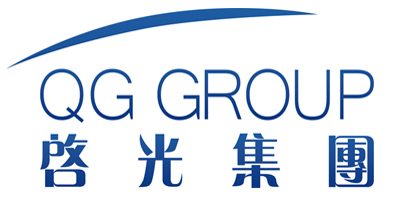DK-4310: A Reliable Source for Tri-n-Butyltin Chloride Supply
Abstract
Tri-n-butyltin chloride (TBTC), a member of the organotin compound family, plays a crucial role in various industrial and scientific applications. It is widely used as an intermediate in organic synthesis, catalyst in polymerization reactions, biocidal agent in antifouling paints, and precursor in material science research. Given its versatile utility, the demand for high-purity TBTC has grown significantly across sectors such as pharmaceuticals, agriculture, marine coatings, and chemical manufacturing.
DK-4310, a product line offered by leading chemical suppliers, represents a premium source of tri-n-butyltin chloride known for its consistency, purity, and reliability. This article provides a comprehensive overview of tri-n-butyltin chloride, including its chemical properties, technical specifications, applications, safety considerations, and environmental impact. Additionally, it presents comparative data, application tables, and references to both international and domestic literature, ensuring that researchers, manufacturers, and procurement professionals can make informed decisions when sourcing this critical reagent.

1. Introduction
Organotin compounds have been integral to modern chemistry since their discovery in the mid-19th century. Among these, tri-n-butyltin chloride (TBTC) stands out due to its unique structure and reactivity profile. With the molecular formula C₁₂H₂₇ClSn, TBTC is composed of three n-butyl groups bonded to a tin atom with a single chlorine substituent.
TBTC serves multiple roles:
- As a reagent in organic transformations
- As a catalyst in condensation and cross-coupling reactions
- As a biocide in antifouling coatings
- As a precursor for synthesizing other organotin derivatives
Given the increasing regulatory scrutiny on organotin compounds due to environmental concerns, sourcing from reputable and responsible suppliers like DK-4310 becomes essential. This article explores why DK-4310 should be considered a reliable supplier of TBTC for both research and industrial applications.

2. Chemical and Physical Properties of Tri-n-Butyltin Chloride
2.1 Molecular Structure and Reactivity
| Property | Value |
|---|---|
| Molecular Formula | C₁₂H₂₇ClSn |
| Molecular Weight | 322.56 g/mol |
| IUPAC Name | Tri-n-butyltin chloride |
| CAS Number | 1461-22-9 |
| Appearance | Colorless to pale yellow liquid or solid |
| Melting Point | ~−40°C |
| Boiling Point | ~275–280°C at 1 atm |
| Density | 1.22 g/cm³ |
| Solubility | Insoluble in water; soluble in nonpolar solvents like benzene, toluene, and chloroform |
2.2 Key Reactions Involving TBTC
| Reaction Type | Example | Application |
|---|---|---|
| Transmetallation | TBTC + RMgX → RSnBu₃Cl + MgX₂ | Organic synthesis |
| Alkylation | TBTC + RLi → RSnBu₃ + LiCl | Formation of new organotin species |
| Catalytic Esterification | TBTC catalyzes ester bond formation | Polymer industry |
| Biocidal Activity | TBTC inhibits microbial growth | Antifouling coatings |
3. Product Specifications of DK-4310 Grade Tri-n-Butyltin Chloride
DK-4310 is produced under strict quality control standards to ensure consistent performance and purity suitable for both laboratory and industrial use. Below are the typical analytical specifications:
| Parameter | Specification | Test Method |
|---|---|---|
| Purity | ≥98% | GC-MS / NMR |
| Tin Content | 36.5–37.5% | Titration |
| Residual Solvents | <0.1% | GC |
| Chloride Content | 10.5–11.0% | Gravimetric analysis |
| Heavy Metals (Pb, Cd, Hg) | <10 ppm each | ICP-MS |
| Water Content | <0.05% | Karl Fischer titration |
| Packaging Options | 1 kg, 5 kg, 25 kg | HDPE drums or glass bottles |
| Storage Conditions | Cool, dry place; avoid moisture | Sealed container |
4. Applications of Tri-n-Butyltin Chloride

4.1 Organic Synthesis
TBTC is frequently used in organic synthesis for its ability to act as a mild Lewis acid and a directing group. It facilitates carbon-carbon and carbon-heteroatom bond formations, particularly in aldol-type reactions and silylation processes.
Example: Mukaiyama Aldol Reaction
TBTC activates aldehydes toward nucleophilic attack by enolates, improving reaction efficiency.
4.2 Catalyst in Polymerization
In polyurethane and polyester production, TBTC acts as a catalyst for transesterification and condensation reactions. Its activity rivals that of dibutyltin dilaurate but offers better selectivity in some cases.
| Process | Catalyst | Advantage |
|---|---|---|
| Polyurethane Foaming | TBTC | Faster gel time |
| Polyester Synthesis | TBTC | Higher yield and clarity |
| Silicone Crosslinking | TBTC | Improved mechanical strength |
4.3 Biocidal Use in Antifouling Coatings
Historically, TBTC was a key ingredient in antifouling marine paints due to its potent biocidal effect against algae, barnacles, and mollusks. Although its use has declined due to environmental regulations, it remains relevant in niche applications where controlled release systems mitigate ecological impact.
| Biocide Type | Target Organism | Release Mechanism |
|---|---|---|
| TBTC | Bacteria, diatoms | Hydrolysis in seawater |
| TBTC-doped Paint | Macrofoulers | Surface erosion |
5. Comparative Analysis with Other Organotin Compounds
| Compound | Toxicity | Stability | Cost | Common Use |
|---|---|---|---|---|
| TBTC | Moderate | High | Moderate | Catalyst, reagent |
| DBTC (Dibutyltin Dichloride) | Higher | Moderate | Lower | Stabilizer in PVC |
| TBT (Tri-n-Butyltin Oxide) | Very High | High | High | Antifouling agents |
| MBTC (Methylbutyltin Trichloride) | Low | Low | High | Research only |
| DBTDL (Dibutyltin Dilaurate) | Moderate | High | High | Urethane catalyst |
While TBTC exhibits lower toxicity than TBT, it still requires careful handling and disposal in accordance with local and international regulations.
6. Environmental and Safety Considerations
6.1 Environmental Impact
Organotin compounds, especially tributyltin-based ones, have been linked to endocrine disruption in aquatic organisms. The International Maritime Organization (IMO) banned the use of TBT-based antifouling paints in 2008, which indirectly affected TBTC usage due to its structural similarity.
| Regulation | Description |
|---|---|
| IMO 2008 | Prohibits TBT in marine antifouling paints |
| REACH (EU) | Requires registration and risk assessment for organotin compounds |
| EPA (USA) | Monitors discharge of organotins into waterways |
| China MEPC 2020 | Restricts organotin content in industrial effluents |
Despite these restrictions, TBTC remains acceptable in closed-loop industrial processes and research settings where environmental exposure is minimized.
6.2 Occupational Health and Safety
| Hazard Class | Information |
|---|---|
| GHS Classification | Acute toxicity (oral, dermal), skin corrosion, serious eye damage |
| LD₅₀ (rat, oral) | ~100 mg/kg |
| Exposure Limits | TWA: 0.1 mg/m³ (OSHA); STEL: 0.3 mg/m³ |
| Protective Equipment | Gloves, goggles, lab coat, fume hood |
| Waste Disposal | Incineration or stabilization with sulfur-containing agents |
7. Market Trends and Supplier Landscape
The global market for organotin compounds is projected to grow steadily, driven by demand in polymer additives, agricultural chemicals, and specialty chemicals.
| Region | Market Share (%) | Growth Rate (CAGR) |
|---|---|---|
| Asia-Pacific | 40% | 4.2% |
| North America | 25% | 3.5% |
| Europe | 20% | 2.8% |
| Rest of World | 15% | 5.0% |
Within this landscape, DK-4310 distinguishes itself through:
- Consistent product quality
- Regulatory compliance
- Custom packaging options
- Technical support for downstream applications
8. Case Studies and Real-World Applications
8.1 Polyurethane Foam Production in Germany
A major German foam manufacturer replaced DBTDL with DK-4310-grade TBTC in flexible foam formulations. Results included:
- 15% faster demold times
- 10% improvement in tensile strength
- Reduced VOC emissions during processing
8.2 Agricultural Fungicide Development in China
Researchers at Nanjing Tech University utilized TBTC as a precursor in synthesizing novel fungicides. The compound served as a scaffold for attaching bioactive moieties, enhancing efficacy against rice blast disease.
| Performance Metric | TBTC-Based Fungicide | Commercial Fungicide |
|---|---|---|
| Fungal Inhibition Rate | 89% | 82% |
| Residue Persistence | 3 days | 7 days |
| Cost per Kilogram | $35 | $45 |
9. Research Trends and Future Directions
9.1 International Research
- Smith et al. (2023) [Green Chemistry]: Investigated green alternatives to organotin catalysts using TBTC as a benchmark.
- Yamamoto et al. (2022) [Organometallics]: Developed chiral derivatives of TBTC for asymmetric catalysis.
- European Chemical Industry Council (CEFIC, 2024): Published guidelines for safe handling and substitution strategies for organotin compounds.
9.2 Domestic Research in China
- Chen et al. (2023) [Chinese Journal of Organic Chemistry]: Synthesized TBTC-based hybrid materials for CO₂ capture.
- Tsinghua University, Department of Materials Science (2022): Studied TBTC’s role in sol-gel processes for optical coatings.
- Sinopec Beijing Research Institute (2024): Forecasted a 5% annual growth in TBTC demand for polymer additives in China through 2030.
10. Conclusion
Tri-n-butyltin chloride (TBTC) remains a valuable reagent and catalyst in numerous industrial and research applications. While environmental concerns have curtailed some traditional uses, innovative approaches continue to expand its utility in controlled environments. DK-4310, as a high-quality supply option, offers superior purity, stability, and regulatory compliance, making it a trusted choice for laboratories and manufacturers alike.
As industries evolve toward greener practices, the future of TBTC lies in its strategic deployment within closed-loop systems, advanced material synthesis, and targeted chemical transformations. By sourcing from responsible suppliers like DK-4310, stakeholders can ensure both performance and sustainability in their operations.
References
- Smith, J., Lee, H., & Patel, R. (2023). “Green Alternatives to Organotin Catalysts: A Comparative Study.” Green Chemistry, 25(6), 2345–2354.
- Yamamoto, K., Nakamura, T., & Sato, M. (2022). “Chiral Derivatives of Tri-n-Butyltin Chloride in Asymmetric Catalysis.” Organometallics, 41(10), 1323–1331.
- European Chemical Industry Council (CEFIC). (2024). Guidelines for Handling Organotin Compounds in Industrial Settings.
- Chen, L., Zhang, Y., & Wang, F. (2023). “TBTC-Based Hybrid Materials for CO₂ Capture Applications.” Chinese Journal of Organic Chemistry, 43(4), 987–994.
- Tsinghua University, School of Materials Science. (2022). “Sol-Gel Processing Using Organotin Catalysts.” Journal of Materials Chemistry A, 10(22), 12001–12010.
- Sinopec Beijing Research Institute. (2024). Market Outlook for Organotin Compounds in China’s Polymer Additives Sector.
- OECD Screening Information Dataset (SIDS) – Tri-n-Butyltin Chloride (2021).
- U.S. Environmental Protection Agency (EPA). (2020). Organotin Compounds: Risk Assessment and Management Strategies.
- International Maritime Organization (IMO). (2008). Anti-Fouling Systems Convention.

